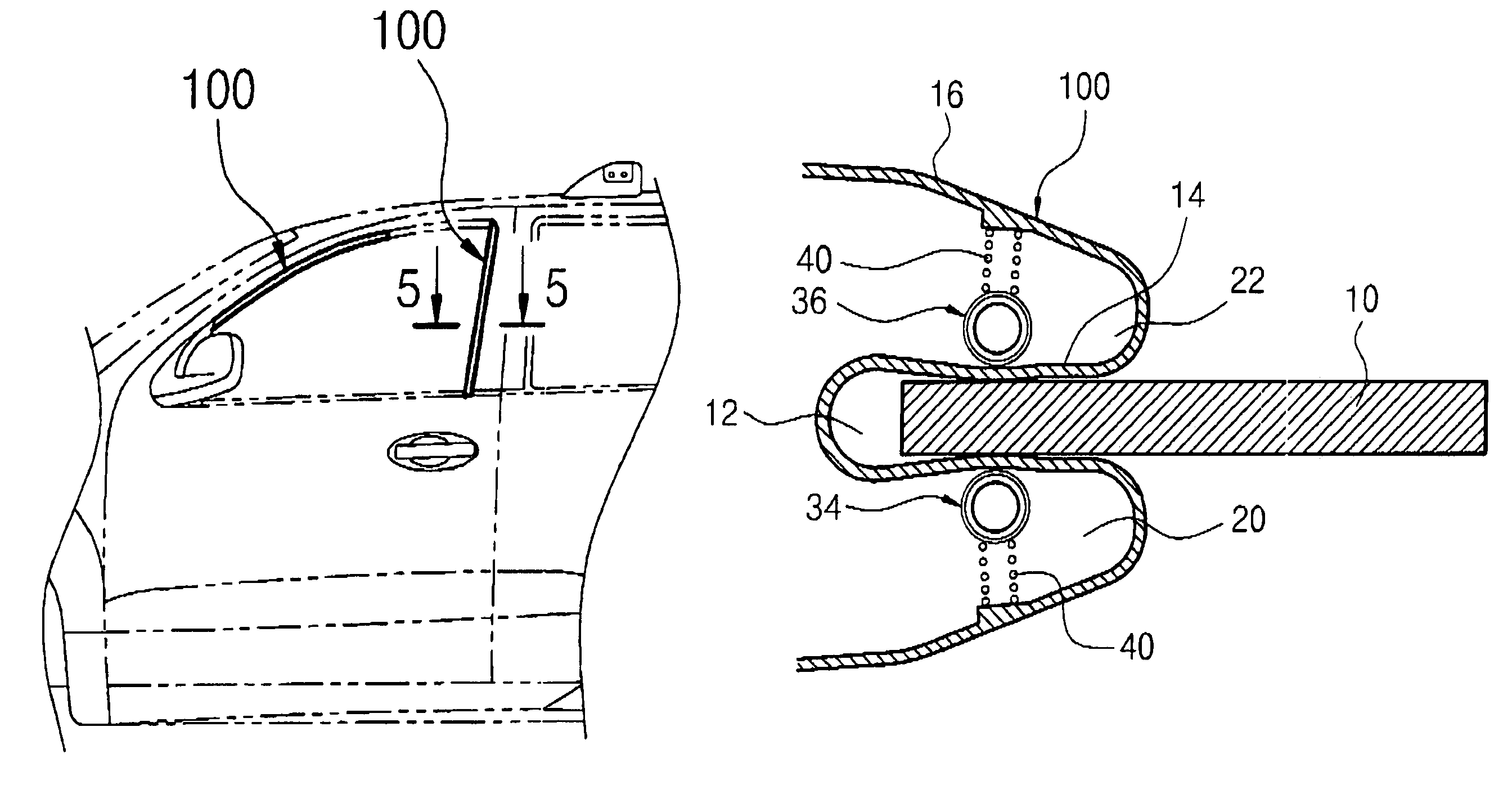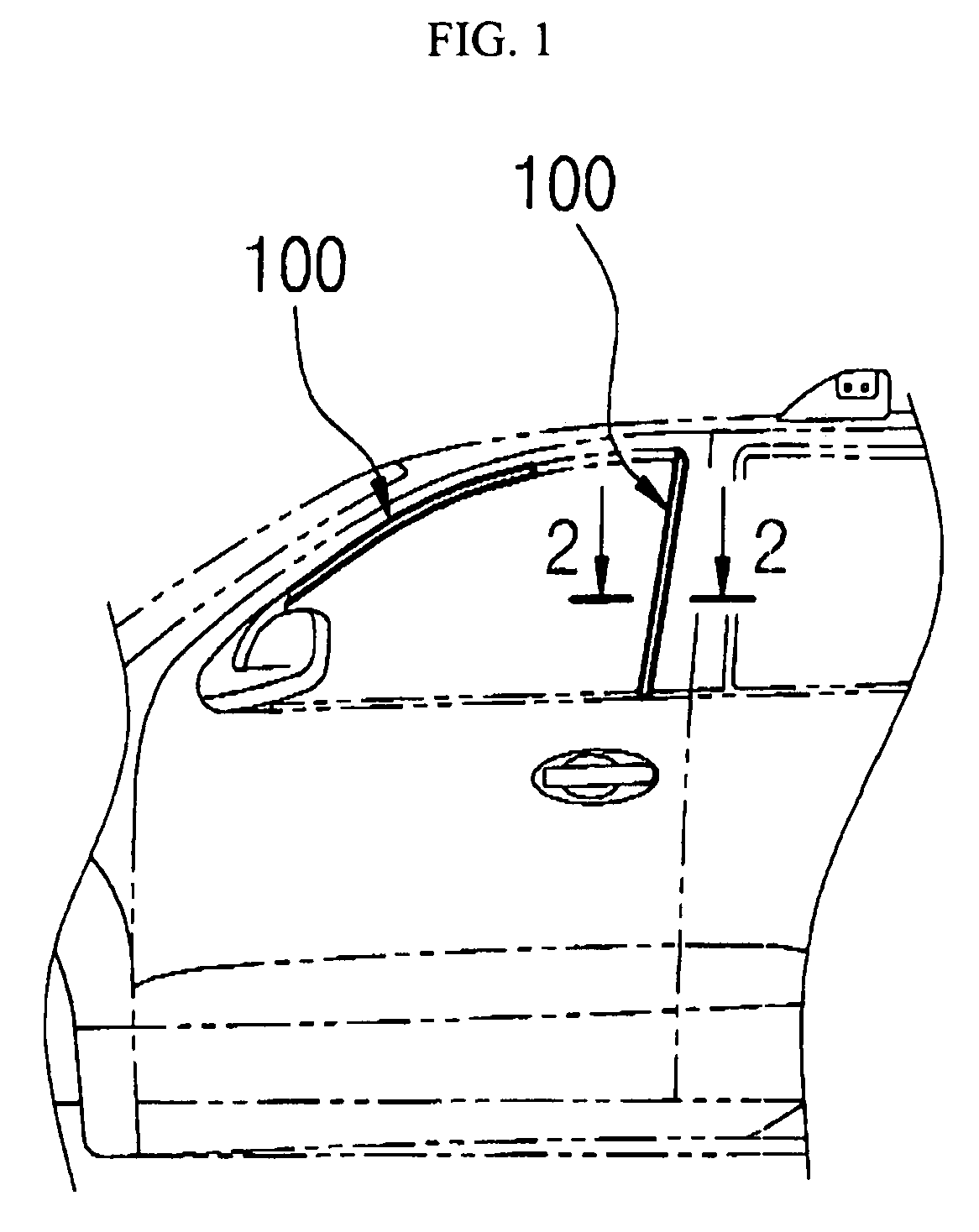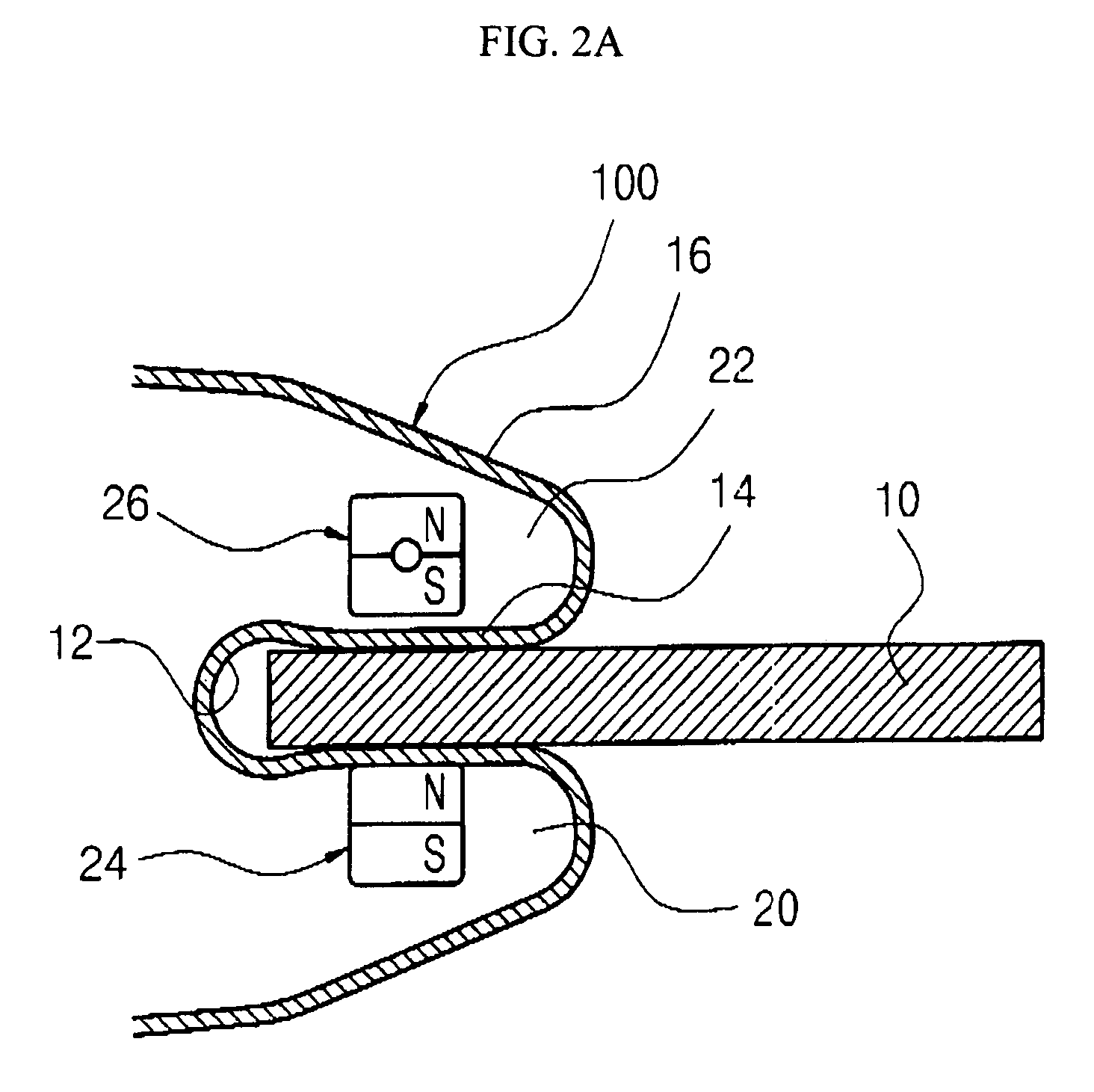Device for and method of preventing rattling of door window glass for vehicles
a door window glass and noise prevention technology, applied in the direction of sealing, vehicle sub-unit features, wing accessories, etc., can solve the problems of frictional noise and simultaneous noise generation, and achieve the effect of preventing frictional nois
- Summary
- Abstract
- Description
- Claims
- Application Information
AI Technical Summary
Benefits of technology
Problems solved by technology
Method used
Image
Examples
first embodiment
[0023]The construction of the present invention will now be described. FIG. 1 is a schematic front view of a vehicle door in which a device for preventing noise from a window for vehicles is to be installed in accordance with an embodiment of the present invention, and FIGS. 3A and 3B schematically illustrate the inner construction of the inventive device and the connection relation between elements thereof in accordance with such an embodiment of the present invention.
[0024]A door window weatherstrip 100 is typically formed of a rubber material suitable for the smooth upward and downward movement of the window. The door weatherstrip 100 is centrally formed with a channel 12 into which both side ends of the window are inserted to allow the window to ascend and descend therealong. The channel 12 is contoured in the shape of an elongated groove that is inwardly formed at the center of the weatherstrip 100 along a longitudinal direction of the weatherstrip 100.
[0025]More specifically, ...
second embodiment
[0032]Now, the construction of another embodiment of the present invention will be described. FIG. 4 is a schematic front view illustrating a vehicle door in which a device for preventing noise from a window for vehicles is to be installed in accordance with this embodiment of the present invention, and FIGS. 6A and 6B schematically show the inner construction of the present invention and the connection relation between elements thereof in accordance with the present invention. A first magnetic means 34 and a second magnetic means 36, each of which is an electromagnet having a coil wound therearound, are mounted at a first hollow part 20 and second hollow part 22 of the weatherstrip 100, respectively. In this case, to the first and second magnetic means 34 and 36 (the electromagnet) is connected a control means for enabling the supply of current thereto. A window UP / DOWN switch 30 and an ETACS (electronic time and alarm control system) 32 is sequentially connected to the second magn...
PUM
 Login to View More
Login to View More Abstract
Description
Claims
Application Information
 Login to View More
Login to View More - R&D
- Intellectual Property
- Life Sciences
- Materials
- Tech Scout
- Unparalleled Data Quality
- Higher Quality Content
- 60% Fewer Hallucinations
Browse by: Latest US Patents, China's latest patents, Technical Efficacy Thesaurus, Application Domain, Technology Topic, Popular Technical Reports.
© 2025 PatSnap. All rights reserved.Legal|Privacy policy|Modern Slavery Act Transparency Statement|Sitemap|About US| Contact US: help@patsnap.com



